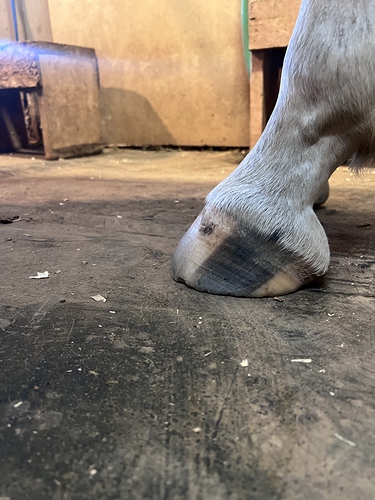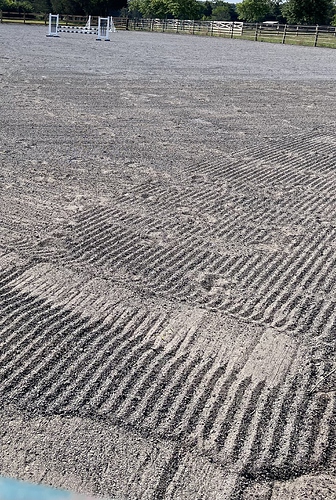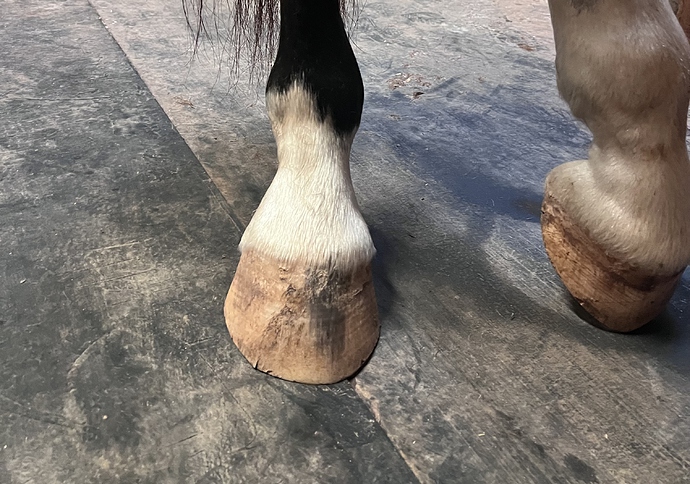I’m concerned that the new footing in our arena is wearing down my horse’s hind hooves too quickly, and I would like to hear the thoughts of the collective.
My barn owners recently added new footing to our outdoor arena. Previously it was a mix of blue stone and sand, and they topped it off with more blue stone. My horse is on a 5-week farrier schedule, shod in the front and barefoot in the back - the picture is three weeks out from her last appointment. We don’t work hard and stick to 20-30 minute rides 3-4 days a week.
So tell me, do you think this looks like excessive wear, or am I overthinking? If it’s excessive wear, would immediate next steps be hind shoes, or is there a hoof dressing I can put on to help keep her feet from wearing away?







